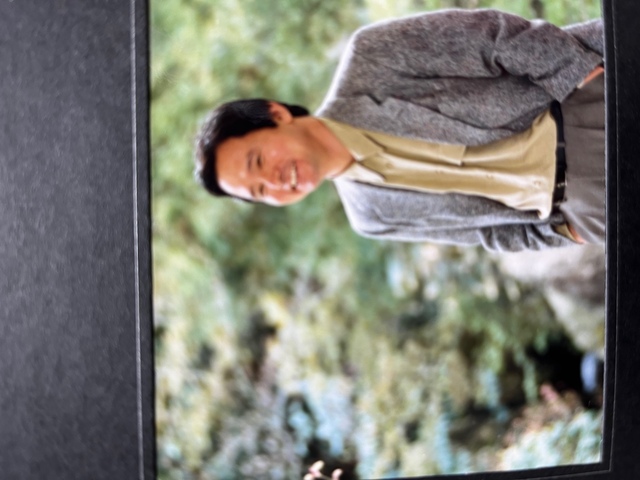The following is from 'A speech agency that doesn't fight in the speech' of extra issue Sound Argument entitled 'Media that fell.'
A 'lie person' called 'Katsuichi Honda.'
Nobukatsu Fujioka
Preface omitted.
During this period, on December 1966, Honda was sent to South Vietnam as a correspondent.
It is the beginning of the era of Vietnamese news.
Honda, who began interviewing under the U.S. military and Saigon administration, eventually encountered a village controlled by Viet Cong, who was secretly located in the Mekong Delta and became a secret veil by his usual participant observational method. The fact of the closed liberation zone was sent to the world as a reportage.
The series of reports was compiled in 'Battlefield Village' published in 1968.
Honda thus unexpectedly discovered the 'Vietnamese People.'
However, this work cannot be collocated with the first ethnographic trilogy.
This is because the battlefield village had to be engraved with a sharp political character that was not found in the trilogy, and even in the process of interviewing, it is unlikely that Honda would have allowed free coverage.
After all, the interview was done with the help of Viet Cong. It can't be a free journalist interview.
So if Honda persuaded the third-party nature of Viet Cong's battlefield village, it would, in turn, be an advocate of Yale to North Vietnam and anti-American public opinion.
It means a definitive transformation from the reportage method of the trilogy period.
Defeated in a lawsuit with Tonooka
It's not clear when I got the book 'Empirical Katsuichi Honda theory' by Tonooka Akio (Nisshin Hodo, 2003).
I was impressed with the reading and deep impression, and I was amazed at the fact that the experience report that achieved the 'Proof of Honda Reportage Bankruptcy' (the subtitle of the book) was written, and I have great respect and gratitude for the author. I remember that.
I think it will be one of the masterpieces of non-fiction works written after the war.
Akio Tonooka was a political scientist born in 1941, whose research subject was 'Communism in Southeast Asia and the Vietnam War.'
Tonooka has been an assistant professor at Tokyo Gakugei University since 1974.
In Vietnam, Saigon was released in 1975 by North Vietnamese tanks, and the US withdrew.
All of Vietnam became a country controlled by the Communist Party.
However, when the Communist Party gained power, the repression of Buddhists began.
Under these circumstances, on November 2, 1975, in the Vĩnh Nghiêm Pagoda in Can Tho, Mekong Delta, 12 monks and nuns (three monks and nine nuns) committed mass suicide in protest against religious repression.
It was in the evening edition dated September 9, 1976, that Japanese newspapers reported on Reuters from Paris.
In this regard, Honda pretends as if he had interviewed himself, and the suicide mastermind, Fam Vam Kho, was a spy of the Saigon government, because it was corrupted ideologically, has sexual relations with many nuns in the temple, suppose he has a total of 26 wives, this lost public support, Honda wrote that he was desperate and dragged other nuns and disciples to suicide.
Those articles are 'What's going on in Vietnam?' (1977, Asahi Shimbun).
However, this article wasn't really anything that Honda independently covered.
After writing things like the right, Honda added at the end of the sentence that 'Tien Hao spoke as above.'
Thien Hao, an executive of the Patriotic Buddhist Church under the Communist Party rule, was accompanied by Yomiuri and Mainichi reporters at the press conference, but why they thought it was too lie, they ignored it without reporting.
Honda misleads the reader as if it was the result of an original interview and secretly added in an alibi manner in the last sentence that it was just a Communist party view.
In short, Honda escaped without being held accountable at the end, but, interestingly, this behavior pattern is precisely the same as the response to the later criticism of 'Journey to China.'
Here, the method of Honda reportage in the time of the ethnological survey trilogy has neither shadow nor shape.
In September 1978, Tonooka met with the high priest Man Zac of the Vietnam Unified Buddhist Church.
Tonooka described the reaction of Mr. Man Zack when he told the contents of Honda's article.
'… The teacher got up from the chair he had been sitting on and started walking in the room with excitement. / The expression at that time is unforgettable. Tilt to one side to think of the shaved head, he swelled his nasal cavity and took a rough breath, and It cracked the joint of the finger of both hands made to recriminate with POKIPOKI.'
Tonooka wrote Honda's criticism on the mini-community paper 'Monday Criticism,' 'Shokun! In the May issue of 1981, I wrote a paper titled 'Now is Peace in Vietnam.'
The article on 'Monday Criticism is recorded in 'Ecology of media figure: Strikes Thinking, Action and Intelligence' (1981, Takagi Shobo).
On the other hand, Honda filed a defamation lawsuit against Shokun! Editor-in-Chief Tsutsumi Gyo and Tonooka.
The case went to the Supreme Court and Honda lost three times.
This article continues.















